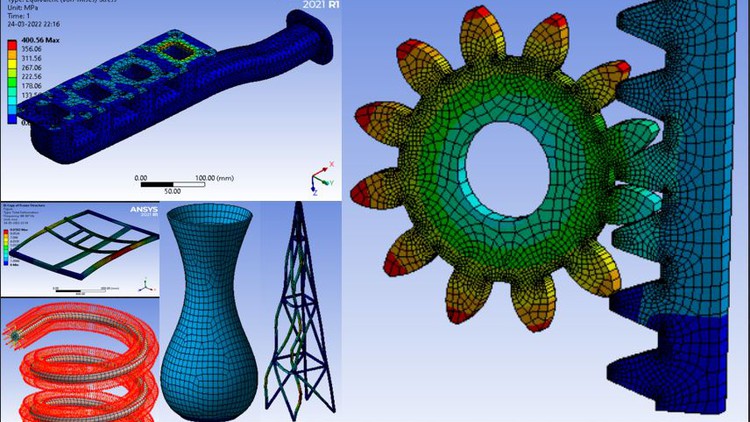Detailed Introduction to Ansys Workbench

Why take this course?
🎓 Detailed Introduction to Ansys Workbench: From Novice to Pro 🚀
🚀 Your Journey with FEA in Ansys Workbench 🛠️ Welcome to an enriching and hands-on course that will take you through the intricacies of Finite Element Analysis (FEA) using Ansys Workbench. This course is meticulously designed to start from the basics of FEA and gradually advance to complex problem-solving techniques using this powerful software. You'll not only learn the theory behind FEA but also understand how to verify results against physical phenomena, ensuring a comprehensive understanding of the subject matter.
📚 Course Structure & Highlights 🧠
- Foundations of FEA/CAE: Dive into the world of FEA/Computer-Aided Engineering (CAE) to get a solid grasp of what it entails and how it can revolutionize your engineering problem-solving approach.
- Material Creation & Data Management: Learn how to create materials within Ansys Workbench, import and export them, and manage data efficiently.
- Mastering Design Modeler: Gain proficiency in geometric modeling with extensive sessions on the various options Ansys Workbench offers for design and creation.
- Meshing Mastery: Explore the meshing capabilities of Ansys Workbench and understand how to apply them effectively to your models.
- Structural Analysis Fundamentals: Delve into linear static structural analysis, modal analysis, buckling analysis, non-linear structural analysis, steady-state and transient thermal analysis, dynamic analysis, explicit analysis, and design optimization. Each topic comes with practical examples and real-world applications.
🔹 Module Breakdown 📐
- Theory of FEA/CAE: Understand the principles that govern FEA/CAE and the logic behind CAE codes and software.
- Material Creation through Engineering Data: Get hands-on experience with creating and managing materials within Ansys Workbench.
- Design Modeler Mastery: Become an expert in CAD and geometric modeling with Ansys Workbench's features.
- Introduction to Meshing: Learn the ins and outs of meshing in Ansys Workbench and how it affects your simulation results.
- Linear Static Structural Analysis: Study static structural analysis, learn about loads, boundary conditions, and apply these concepts with an example, like analyzing an Allen Key.
- Modal Analysis: Explore the theory of modal analysis, understand its governing equations, and apply it to practical cases such as a frame structure.
- Buckling Analysis: Learn the principles of buckling analysis with examples like a connecting rod or mobile tower.
- Non-Linear Structural Analysis: Understand non-linear analysis types and how to control them within Ansys Workbench.
- Steady State vs Transient Thermal Analysis: Discover the differences between steady-state and transient thermal analyses with practical examples.
- Dynamic Analysis & Explicit Analysis: Learn about different types of structural and dynamic analyses, including explicit analysis, and perform a parametric study on cylinder impact.
- Design/Topology Optimization: Get introduced to design optimization concepts and apply them through examples like bridge optimization, C-Clip, and L Plate.
💡 Your Questions Answered 📢 The course concludes with a dedicated section to address any doubts or questions you may have during your learning journey. I am committed to keeping this session updated with answers to your inquiries.
🔄 Course Updates 🔄
- Topology Optimization Section: A new section has been added to cover the fascinating field of topology optimization.
- New Examples on Topology Optimization: Practical examples have been included to solidify your understanding of this advanced topic.
- Implicit vs Explicit Video: A new video titled "Implicit vs Explicit" has been added to help you understand the differences and applications between these two analysis types.
Embark on this educational adventure with confidence, as you'll be well-equipped with both theoretical knowledge and practical skills by the end of this course. Let's unlock the potential of Ansys Workbench together! 🤓✨
Loading charts...